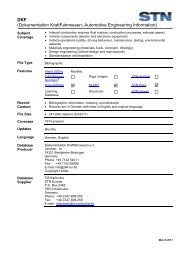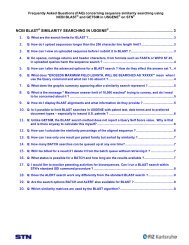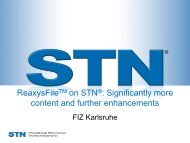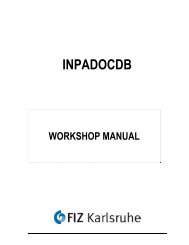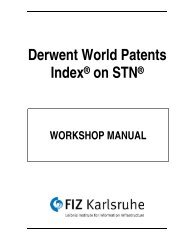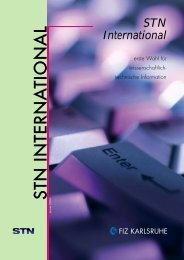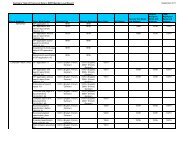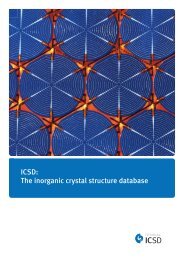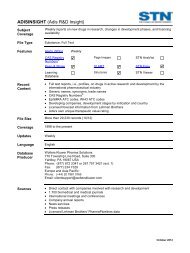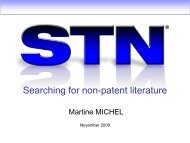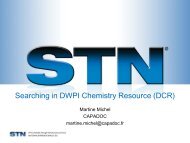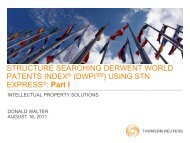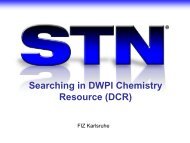note - FIZ Karlsruhe
note - FIZ Karlsruhe
note - FIZ Karlsruhe
You also want an ePaper? Increase the reach of your titles
YUMPU automatically turns print PDFs into web optimized ePapers that Google loves.
Sequence Code Match Searching<br />
Introduction<br />
Sequence Code Match Searching<br />
Sequence Code Match (SCM) searching using RUN GETSEQ finds the exact sequence entered, or<br />
with controlled variation using special symbols. The search can either be exact or subsequence,<br />
i.e. where the query string can be embedded in a larger sequence. It has an important advantage<br />
over similarity searching (page 12) in that it is very precise. What you search for is exactly what<br />
you get. SCM is useful for short, conserved region searches, including those in motifs or domains.<br />
It is also particularly effective for very short sequences, e.g. DNA probes and primers.<br />
GETSEQ search options<br />
Summary table<br />
Search Type Polypeptides Nucleic Acids<br />
EXACT /SQEP /SQEN<br />
SUBSEQUENCE /SQSP /SQSN<br />
EXACT FAMILY /SQEFP None<br />
SUBSEQUENCE<br />
FAMILY<br />
<strong>note</strong><br />
Page 102 | GENESEQ on STN (DGENE) Workshop Manual<br />
/SQSFP None<br />
BLAST nucleic acid searches retrieve U or T in sequence answers, regardless<br />
of whether or not U or T is used in the query. Us are always treated as Ts.<br />
In contrast, GETSEQ treats U and T independently, offering greater search<br />
precision when searching either DNA or RNA sequence queries.



